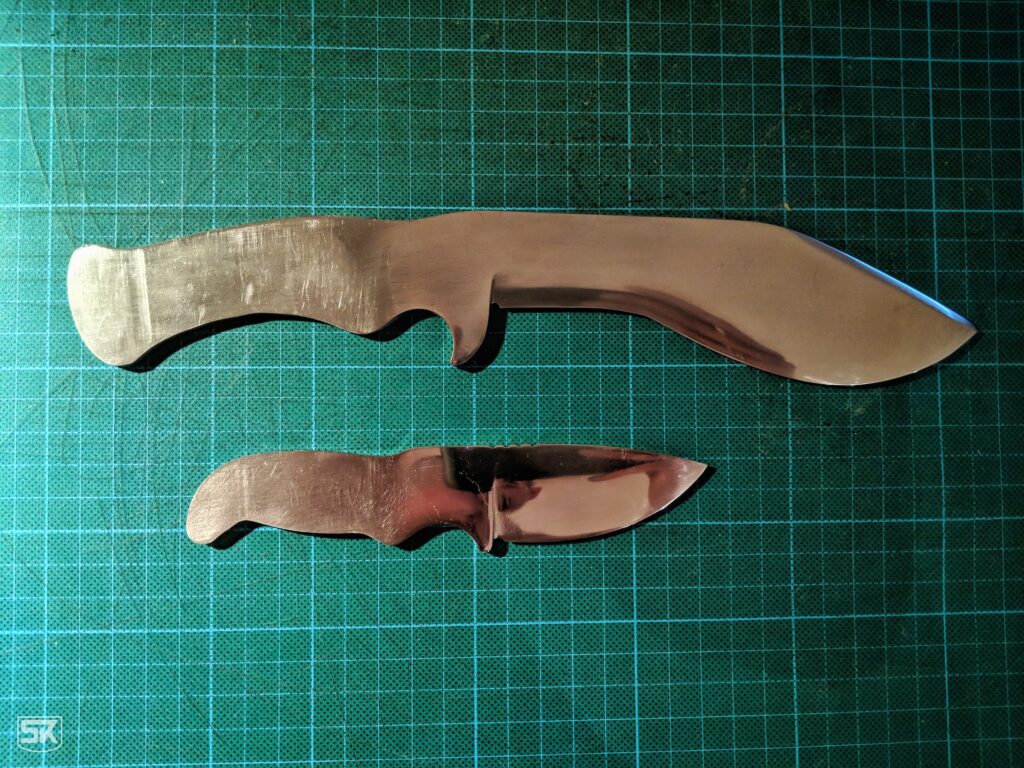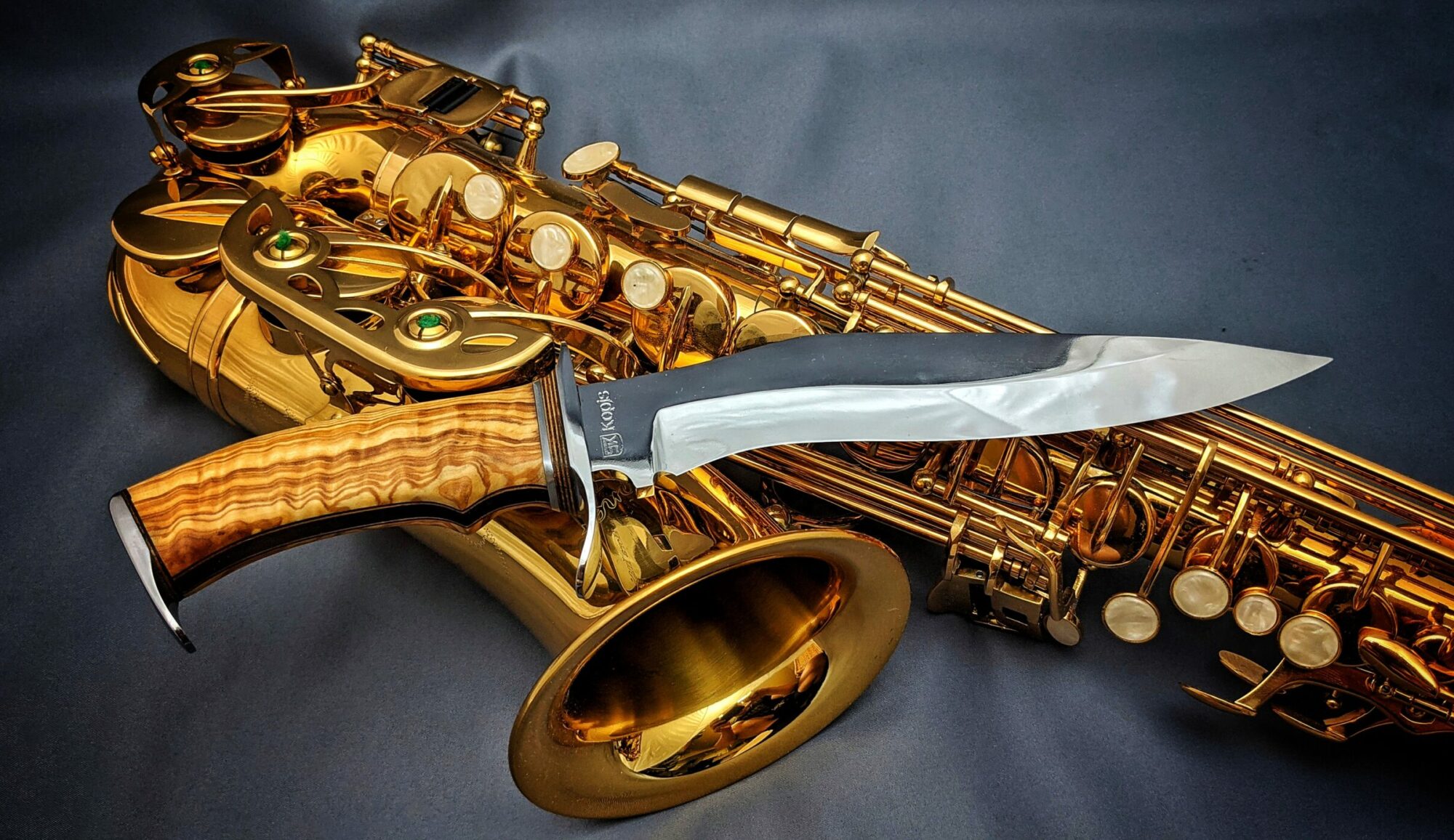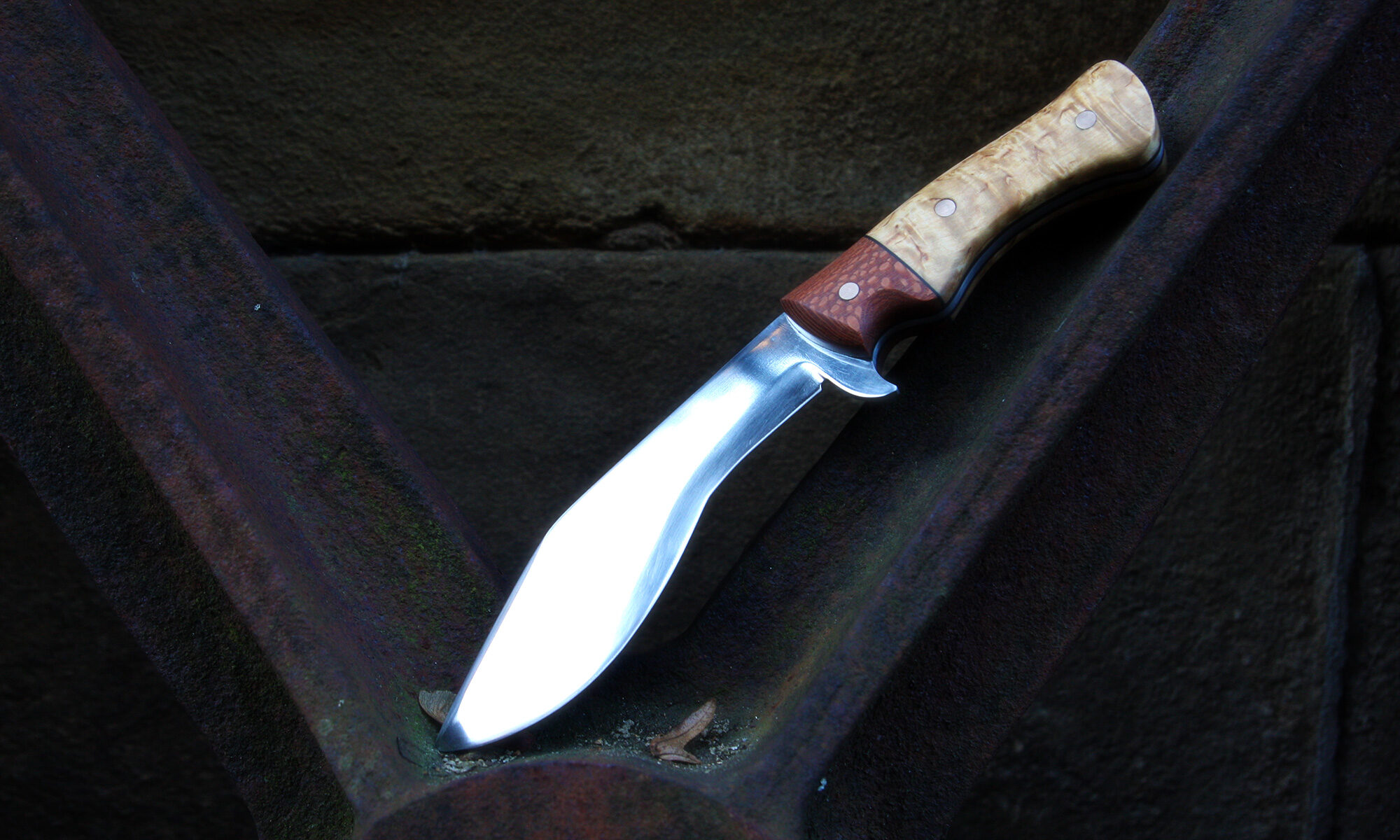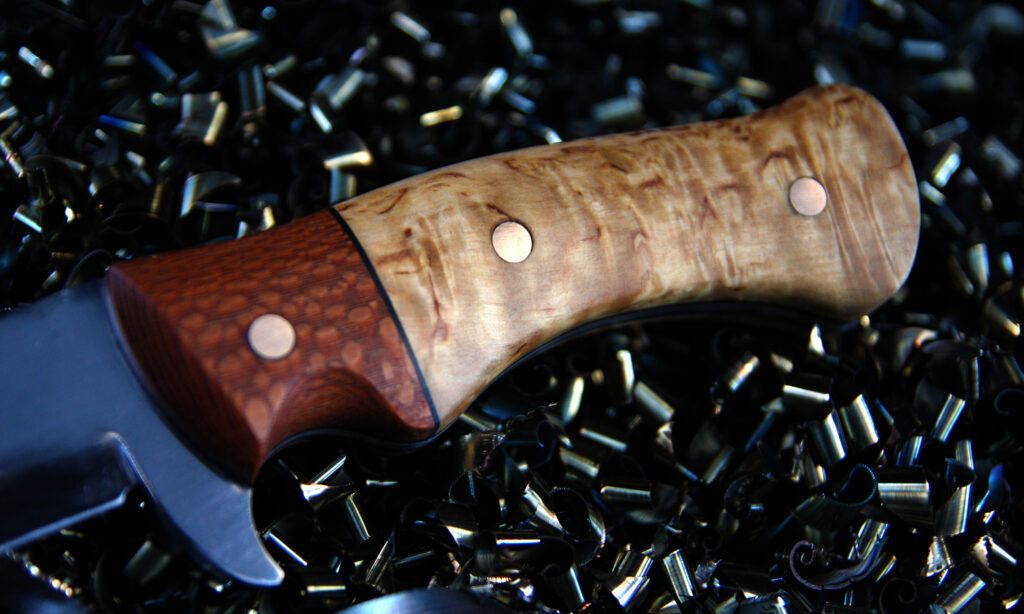Before I even started to make the handle of my first knife, I began to make a bigger second knife. I am a big fan of a computer game series and I am playing an older title where Kukri or Khukuri Knifes play a big role in the game as one of the main weapons. So why not try and build one my own. I wanted to take a more compact and modern approach.

As I work a lot with computers and graphics it was clear I wanted to do the designs using a graphics program. First I thought about using dedicated CAD tools but I decided to go the easy way and chose Inkscape. I did some sketches and printed them out to get a feeling for the real dimensions of blade and handle and the details. It is easy to draw things but then I had to figure out how to do these things with steel. So I ended up doing some design iterations on paper.
I transferred the form onto my 1.2003 Steel and cut it out with my angle grinder. Everything went fine. I even was bold enough to try free hand grinding the bevels, yeah on my second knife with a strongly recurved edge… I did it on the slack part of my grinding belt and I was very happy with how much control I got instead of the flat part of the belt – the result were strongly convex grinded bevels. I hardened in my improvised forge out of porous concrete and a gas torch I fixed to the upper wall. The file did not bite into the steel so I am convinced the steel reached it desired hardness.
One thing I did before hardening was a very intense hand sanding and I put lots of effort into a nice surface finish. I did that again after the hardening and before tempering the steel. So I had to do it again after the steel came out nice and golden after one hour of its 200°C temperings in our kitchen oven. That is a lot of sanding and I am sure that is stupid to do. I keep that in mind for my next knife.
For the handle, I had something special in mind. I had bought some nice woods for the handle halves – Karelian birch and leopard wood. I planned to do a two-part handle and separate the woods with some self-made vulcan fibre and brass plates to get nice golden lines running around the grip.
I put the parts for the handle together with epoxy and let it dry over night. The results looked nice … but … unfortunately I saw that at the brass parts did not stick good enough and broke apart from the wood. So I ripped everything apart and did the handle without the brass. That worked out good after another night of waiting for the epoxy and so the next part was to put the halves on the blade.
I had used my battery powered drill to put the holes for the pins into the blade before the heat treat and I did the same to drill through the wood. And yes I am an idiot: the holes were not nice perpendicular to the blade. As I had not any wood left for the handle I put that learning aside and decided to finish the knife even with this flaws. Before I continued with the handle I sanded and polished the blade to a mirror finish.
I put everything together and let the epoxy dry over the night. So I was ready to grind the grip into shape the next day. That worked out very good and the result felt good in my hands. So next was hand sanding the grip up to 240 grit, watering the wood and hand sanding again after it dried. To protect the wood I now used three layers of boiled linseed oil.
And so close to finishing the knife I learned another big lesson: sharpening a strongly convex beveled blade is very hard to do if you want a nice sharp blade. I just could not get an angle flat enough without taking away some of the bevels. In the end, I was able to do the paper cutting test – but lesson learned.



